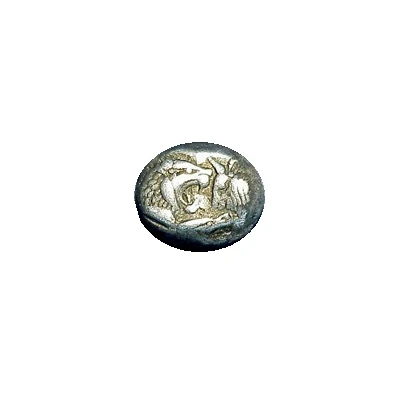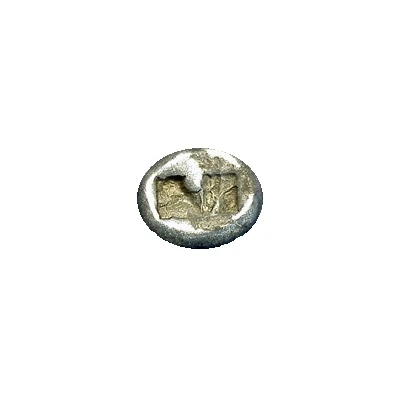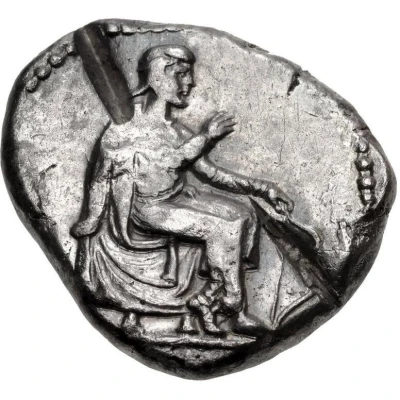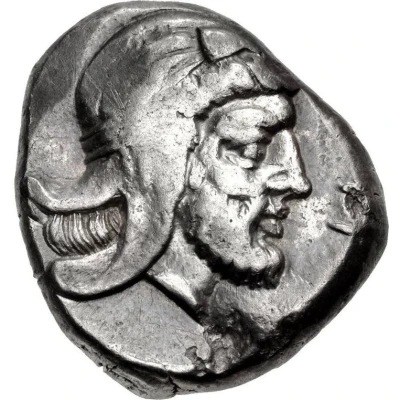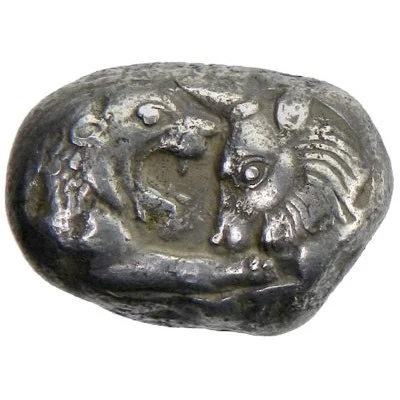
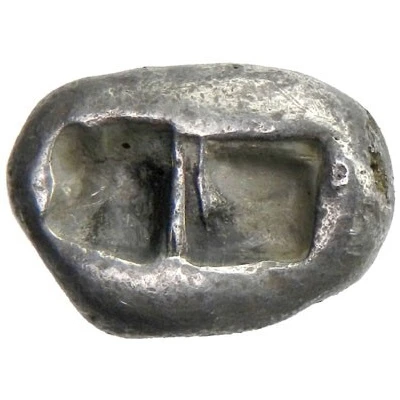

© Stephen Album Rare Coins
Stater - temp. Croesus "last king of Lydia" / Cyrus the Great "Cyrus II of Persia" Lydia satrapy 560 BC - 530 BC
| Silver | 10.5 g | 18 mm |
| Issuer | Satrapy of Lydia (Achaemenid Satrapies) |
|---|---|
| King | Croesus (𐤨𐤭𐤬𐤥𐤦𐤮𐤠𐤮) (560 BC - 546 BC) Cyrus II the Great (560 BC - 530 BC) |
| Type | Standard circulation coin |
| Years | 560 BC - 530 BC |
| Value | Silver Stater (2) |
| Currency | Drachm (550-330 BCE) |
| Composition | Silver |
| Weight | 10.5 g |
| Diameter | 18 mm |
| Shape | Round (irregular) |
| Demonetized | Yes |
| Updated | 2024-10-10 |
| Numista | N#90397 |
|---|---|
| Rarity index | 94% |
Reverse
Two square incuse punches of unequal size
Comment
Campaign against PersiaCroesus' uneasy relations with the Greeks obscures the larger fact that he was the last bastion of the Ionian cities against the increasing Persian power in Anatolia.
Croesus, formed an alliance with Sparta in addition to those he had with Amasis II of Egypt and Nabonidus of Babylonia, and launched his campaign against the Persian Empire in 547 BC.
He was intercepted near the Halys River in central Anatolia and an inconclusive battle was fought. It was the usual practice in those days for the armies to disband for winter and Croesus did so accordingly.
Cyrus did not, however, and he attacked Croesus in Sardis, capturing him. It became clear that the powerful empire destroyed by the war was Croesus's own.
By 546 BC, Croesus was defeated and captured by the Persians.
After defeating Croesus, the Persians adopted gold and silver as the main metal for their coins, maintaining the Lydian style.
The types of the Lydian king were continued by the Persians until c. 515 BC when the first of the running king sigloi were issued.
Notes from Phil Jones on June 10, 2009: "The Achaemenids took the over the Lydian Kingdom and continue the coinage of Kroisos for approximately 30 years after the death of the Lydian King.
Stylistically, nearly the same dies are used, however there are small variations, particularly around the bull. As well, the post Croesan coinage tends to not strike the legs well, though I cannot tell you why this is the case honestly... Kraay notes that "these post-Croesan issues are characterized by a progressive stylization of their types, and by the almost total omission of fractional denominations smaller than the gold stater and the silver half stater, which remained the only normal denomination in the succeeding Persian coinage." He continues to suggest later on that "...this concentration upon two major denominations would seem to imply some restriction in the range of transactions for which coinage was being employed in the less properous climate of the secon half of the century." Perhaps there is less dedication or less focus that comes to the mint in Sardis at this time as well, as the Persians really don't have much of a history with the concept of stater directly (though arguments can be made that they do bring with them the concept of state issued precious metals (Kraros) from the Babylonian tradition (For further information, see Morris Silver's wonderful discussion of pre-coinage and early economies posted on line: http://members.tripod.com/~sondmor/index-7.html))."
Interesting fact
One interesting fact about this coin is that it features two different rulers on opposite sides. On one side is Croesus, the last king of Lydia, and on the other side is Cyrus the Great, also known as Cyrus II of Persia. This coin was minted during the Achaemenid Empire, which was the first multicultural empire in history, spanning across three continents and leaving a lasting legacy in the ancient world.
